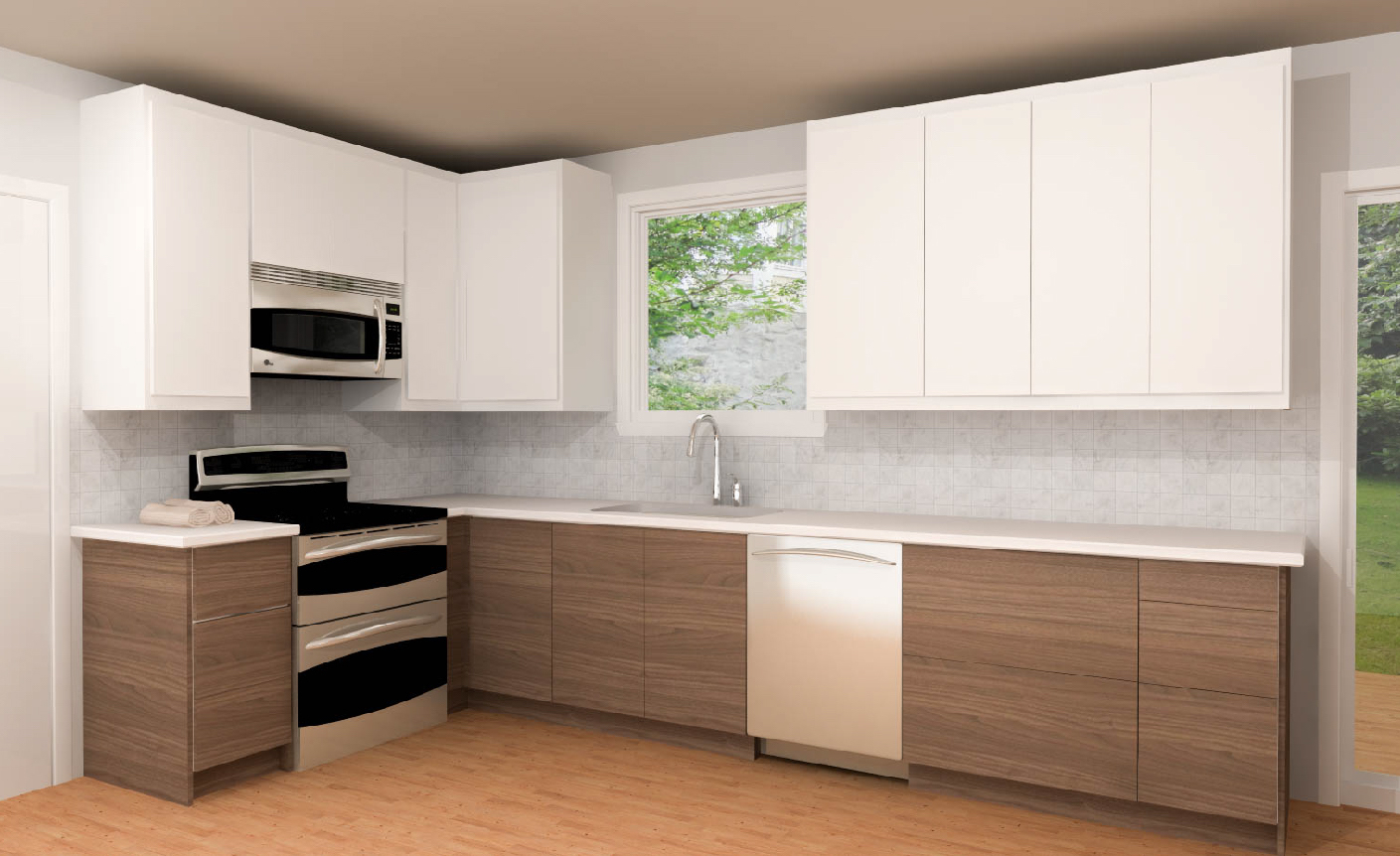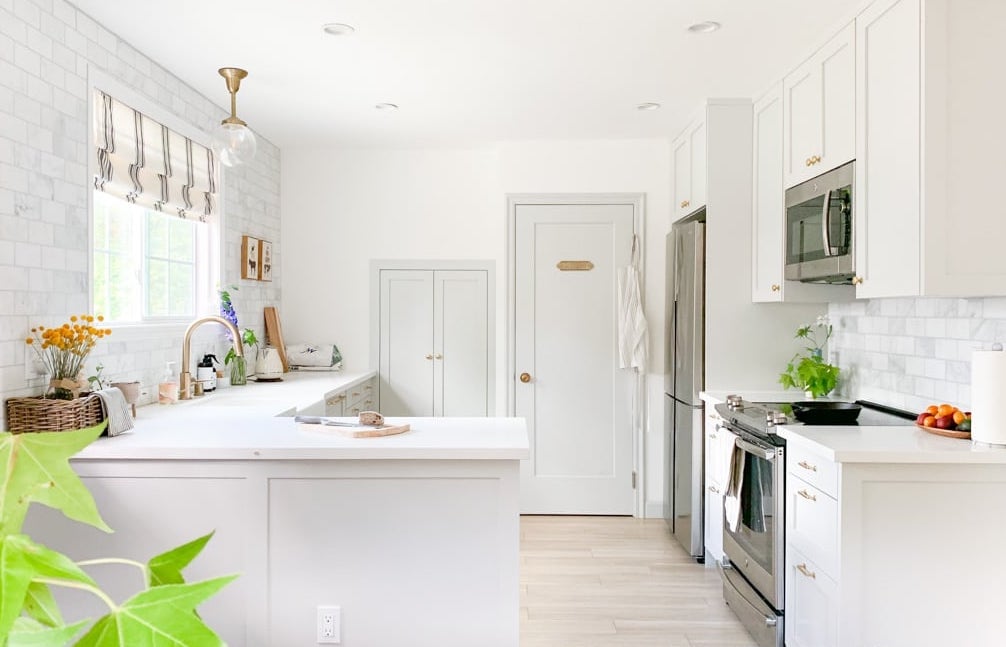IKEA Kitchen Cabinet Quality and Durability

IKEA kitchen cabinets have been a popular choice for homeowners looking for affordable and stylish options. While their affordability is undeniable, the quality and durability of these cabinets have been a subject of debate. This section delves into the materials used, common issues, and overall longevity of IKEA kitchen cabinets from 2016, comparing them to other brands in the same price range.
Materials Used in IKEA Kitchen Cabinets
The materials used in IKEA kitchen cabinets in 2016 varied depending on the specific cabinet line. Generally, they were constructed from particleboard, a cost-effective material made from wood chips and resin. This material was often laminated with melamine, a durable and scratch-resistant finish.
- Particleboard: Although affordable, particleboard can be susceptible to moisture damage and may not be as strong as solid wood. It is also less durable than plywood.
- Melamine: While durable, melamine can chip or scratch over time, especially if not properly cared for. It can also be difficult to repair if damaged.
IKEA also offered some cabinets made from solid wood, such as birch or beech. These cabinets were generally more expensive but offered a higher level of quality and durability.
Durability of IKEA Kitchen Cabinets
Reports on the durability of IKEA cabinets from 2016 are mixed. Some owners have reported satisfaction with their cabinets, finding them to be sturdy and functional. Others have encountered issues, such as:
- Door and Drawer Sagging: Due to the use of particleboard, some owners have reported sagging doors and drawers over time, particularly with heavier loads.
- Hardware Failure: The hardware used on IKEA cabinets can sometimes fail, leading to issues with hinges, drawer slides, and other components.
- Water Damage: Particleboard is susceptible to water damage, which can cause warping, swelling, and mold growth.
Comparison to Other Brands
In terms of quality and durability, IKEA cabinets in 2016 were generally comparable to other brands in the same price range. While IKEA may not have offered the same level of quality as high-end brands, they provided a good value for the price. However, it’s important to note that the durability of any kitchen cabinet depends on factors such as usage, maintenance, and installation.
IKEA Kitchen Cabinet Design and Functionality: Reviews Of Ikea Kitchen Cabinets 2016

IKEA kitchen cabinets in 2016 reflected a trend towards modern, minimalist designs with a focus on functionality and affordability. The company offered a wide range of styles, from sleek and contemporary to traditional and rustic, catering to diverse tastes and kitchen aesthetics.
Design Trends of IKEA Kitchen Cabinets in 2016
The design trends of IKEA kitchen cabinets in 2016 emphasized clean lines, simple shapes, and a focus on functionality. The company offered a variety of finishes, including wood, laminate, and high-gloss acrylic, allowing homeowners to create kitchens that reflected their personal style.
- Modern and Contemporary Styles: IKEA’s Metod and Akurum cabinet lines featured sleek, minimalist designs with flat-panel doors and integrated handles. These styles were popular for their clean lines and modern aesthetic, making them suitable for contemporary and minimalist kitchens.
- Traditional and Rustic Styles: IKEA also offered cabinets with traditional and rustic designs, such as the Bodbyn and Faktum lines. These cabinets featured raised-panel doors, decorative hardware, and wood finishes that evoked a sense of warmth and charm. These styles were popular for kitchens with a farmhouse or cottage aesthetic.
Functionality of IKEA Cabinets in 2016
IKEA kitchen cabinets in 2016 were designed with functionality in mind, offering a variety of features to maximize storage and organization. The company’s focus on efficiency and practicality was evident in its cabinet designs, which included:
- Storage Options: IKEA offered a wide range of storage options, including base cabinets, wall cabinets, corner cabinets, and tall cabinets. The company also offered a variety of drawer systems, including pull-out drawers, roll-out drawers, and wire baskets, allowing homeowners to customize their storage solutions based on their needs.
- Drawer Systems: IKEA’s drawer systems were designed for smooth operation and durability. The company’s soft-closing drawers and hinges ensured quiet and gentle operation, while the sturdy construction of the drawers provided long-lasting performance.
- Door Types: IKEA offered a variety of door types, including flat-panel doors, raised-panel doors, glass doors, and tambour doors. These options allowed homeowners to create a unique look for their kitchen, while also providing different levels of functionality. For example, glass doors allowed for displaying items while keeping them dust-free, while tambour doors provided a sleek and modern look.
Examples of IKEA Kitchen Cabinet Designs in 2016
IKEA’s kitchen cabinets were versatile and adaptable, allowing homeowners to create kitchens that met their individual needs and preferences. The company’s wide range of styles, finishes, and storage options allowed for a high degree of customization, making it possible to create kitchens that were both functional and aesthetically pleasing.
- Small Kitchen: For a small kitchen, IKEA’s Metod cabinet system with its narrow cabinets and pull-out drawers provided efficient storage solutions, maximizing space while maintaining a modern aesthetic.
- Open-Concept Kitchen: IKEA’s Akurum cabinet system with its sleek, minimalist design and integrated handles blended seamlessly with the open-concept design of the kitchen, creating a modern and cohesive look.
- Traditional Kitchen: IKEA’s Bodbyn cabinet system with its raised-panel doors, decorative hardware, and wood finishes added a touch of warmth and charm to a traditional kitchen, complementing the existing décor.
IKEA Kitchen Cabinet Installation and Assembly

Installing IKEA kitchen cabinets can be a rewarding DIY project, but it also presents unique challenges. This section delves into the process, offering tips and insights to navigate the installation process successfully.
IKEA Kitchen Cabinet Installation Process
Installing IKEA kitchen cabinets is a step-by-step process that involves careful planning, precise measurements, and meticulous assembly. The following steps Artikel the general process:
- Planning and Preparation: Begin by carefully measuring your kitchen space and designing your layout. Consider factors like appliance placement, work triangle, and desired storage solutions. IKEA offers online planning tools to help you visualize your kitchen design.
- Cabinet Assembly: IKEA cabinets arrive flat-packed, requiring assembly. Follow the detailed instructions provided with each cabinet. Utilize the included hardware and tools. Take your time and ensure all components are properly secured.
- Wall Preparation: Ensure your walls are level and ready to support the cabinets. You may need to install wall studs or use specialized brackets for extra support. Consider using a stud finder to locate existing studs for secure attachment.
- Cabinet Installation: Start by installing the base cabinets, attaching them to the wall using screws or brackets. Use a level to ensure the cabinets are straight and even. Then, install the upper cabinets, ensuring they are aligned with the base cabinets.
- Countertop Installation: Once the cabinets are in place, install your countertops. This may involve cutting the countertops to fit your kitchen layout. Be sure to use appropriate tools and techniques for cutting and securing the countertops.
- Finishing Touches: After installing the cabinets and countertops, install the cabinet doors and drawer fronts. Complete the installation by adding hardware, such as handles, knobs, and hinges.
Tools and Techniques for Installing IKEA Kitchen Cabinets, Reviews of ikea kitchen cabinets 2016
Successful IKEA kitchen cabinet installation requires a few essential tools and techniques. Here’s a list of tools you’ll likely need:
- Power Drill: A power drill with a variety of drill bits is essential for assembling cabinets and attaching them to the wall.
- Level: A level is crucial for ensuring your cabinets are installed straight and even.
- Tape Measure: A tape measure is essential for taking precise measurements for your cabinets and countertop.
- Stud Finder: A stud finder helps locate wall studs for secure cabinet attachment.
- Screwdriver: A screwdriver is needed for assembling cabinets and installing hardware.
- Safety Glasses: Protect your eyes from debris during installation.
- Work Gloves: Protect your hands from splinters and other potential hazards.
DIY vs. Professional Installation
Deciding whether to install your IKEA kitchen cabinets yourself or hire a professional is a significant decision. Here are some factors to consider:
- Time and Skills: DIY installation requires time, patience, and basic carpentry skills. If you’re comfortable with tools and have the time, DIY can be a cost-effective option.
- Cost: Professional installation can be more expensive but offers the advantage of expert knowledge and experience. It’s important to get quotes from several professionals to compare costs.
- Complexity: If your kitchen layout is complex or involves specialized features, professional installation might be the better choice.
Reviews of ikea kitchen cabinets 2016 – While IKEA kitchen cabinets in 2016 were known for their affordability and design, one area where they sometimes fell short was lighting. For a sleek and functional kitchen, consider adding QVC under cabinet lighting to your IKEA setup. These lights not only enhance visibility but also create a modern, inviting ambiance, a feature that many IKEA kitchen cabinet reviews from 2016 highlighted as a potential upgrade.
While reviews of IKEA kitchen cabinets from 2016 might be a bit outdated, it’s a good reminder that trends change, even in home design. Just as kitchen styles evolve, so do bedroom aesthetics. If you’re looking to add a touch of whimsy to your space, consider adding some girly bedroom wall stickers for a fun and personalized touch.
Similarly, kitchen cabinets can be updated with new hardware, paint, or even a new countertop to give them a fresh look, just like a bedroom can be transformed with a few well-chosen wall decals.